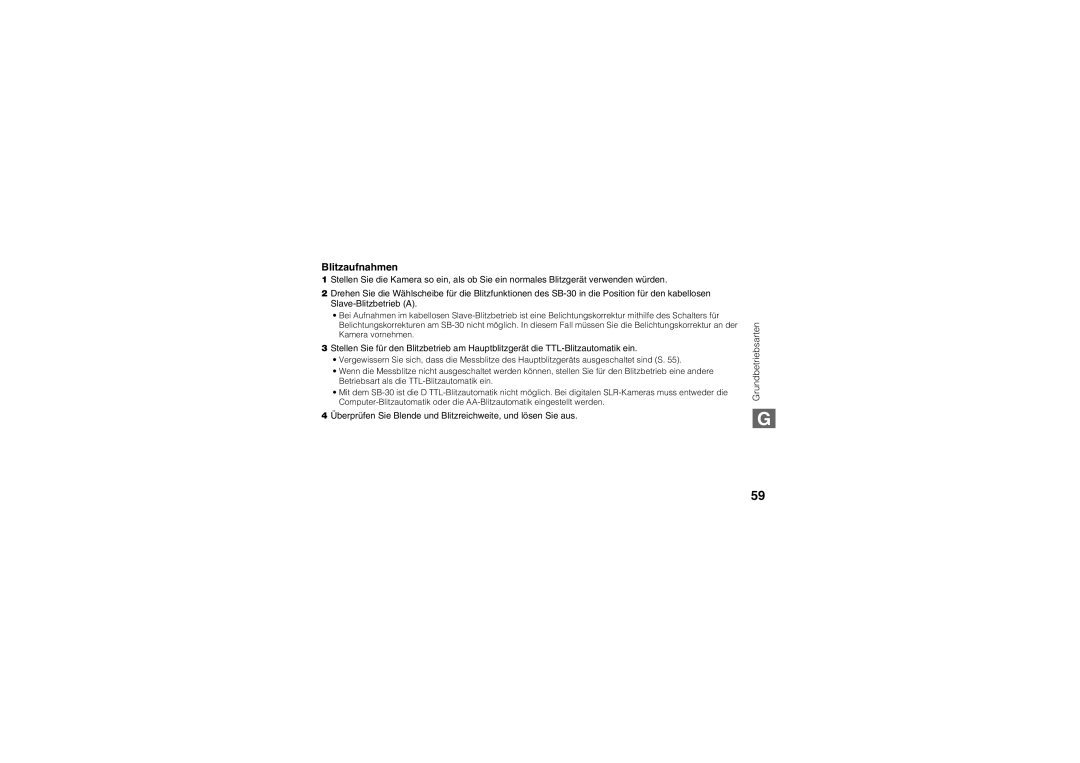SB-30 specifications
The Nikon SB-30 is a compact and versatile speedlight designed to enhance photography by providing additional light in various situations. Released as part of Nikon’s range of portable flash units, the SB-30 is particularly favored for its lightweight design and advanced features that cater to both amateur and professional photographers.One of the main features of the SB-30 is its compatibility with a wide array of Nikon cameras. This compatibility ensures that the flash can seamlessly integrate with both film and digital models, making it a practical option for users with different systems. The SB-30 supports TTL (Through The Lens) metering, allowing precise exposure control. This technology measures the light reflected from the subject through the lens, adjusting the flash output to provide optimal lighting conditions.
The flash has a guide number of approximately 30 (in meters at ISO 100), which offers sufficient power for a variety of shooting scenarios, whether indoors or outdoors. The SB-30 is equipped with a tilting head that can be angled to bounce light off ceilings or walls, creating softer, more natural lighting effects. This feature is particularly useful in portrait photography, where harsh direct light can lead to unflattering shadows.
Another notable characteristic of the SB-30 is its ability to utilize advanced wireless communication. It can function as a master or slave unit in a multi-flash setup, allowing photographers to create more dynamic lighting scenarios. This flexibility enables creative control over lighting in complex compositions, making it an excellent choice for event and studio photography.
The SB-30 is powered by four AA batteries, which provide a reasonable number of flashes per charge, depending on usage. Its compact size makes it easy to carry, making it a convenient choice for photographers on the go. Additionally, the flash unit features a built-in diffuser and a wide-angle adapter, which enhance its versatility by allowing for softer light and wider coverage.
In conclusion, the Nikon SB-30 stands out with its combination of portability, advanced TTL functionality, and versatile lighting capabilities. Whether for casual shooting or professional work, the SB-30 remains a reliable choice for those looking to improve their photography with the power of external flash lighting.

